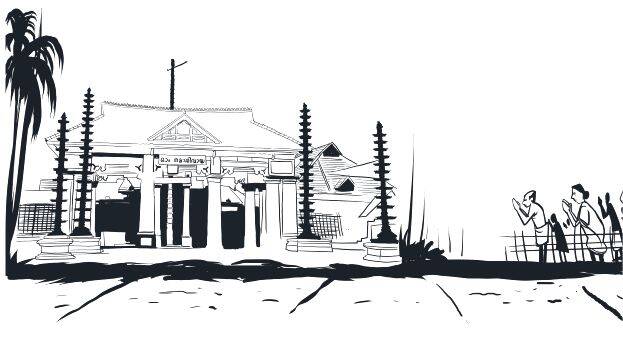

Vaikom satyagraha is celebrating its centenary year. The incident got into the annals of Indian history and is considered to be one that gave a renaissance face in Kerala. There are two vital reasons for the issue to attract national eyes. First for the involvement of Sree Narayana guru. The second is the indomitable presence of Mahatma Gandhi.
T K Madhavan was the backbone behind the protest. It is said that the thought of the protests brewed inside the mind of Madhavan for more than five years. Sree Narayana guru once passed the bridge near Vaikom temple. Those were times when the archaic rules of caste divide played strong across all strata of society. A small uprise happened since Gurudevan hailed from a lower class. No one from the lower caste would have had the nerve to pass the bridge near the temple, but Gurudevan made the pass unknowingly. The upper caste Hindus fervently urged the authorities for punitive actions. However, considering the revered stature of Gurudevan, no such move was made.
Nevertheless, the incident irked T K Madhavan to the core. He along with many other reformists including the likes of Sahodaran Ayyapan, and K K Madhavan walked through the bridge in protest of the discrimination followed religiously by the authorities. The government back then never batted an eyelid into the issue which made Madhavan morph the small movement into a satyagraha.
Congress initially took back foot in the issue after the plenary session in Kolkata banned the direct involvement of the party in regional protests. This made Madhavan approach none less than Gandhi for cooperation. On expected lines, Gandhi adorned his khadi clothing and took the train to reach Vaikom down south in Kerala. The protest saw participation from upper caste and lower caste Hindus including Mannath Padmanabhan, K Kelappan, Chathukutty Nair, Sadhu M P Nair, and many others. The protest was an amalgamation of many minds for a similar cause. The clout and coherence strength of one individual, that is Gandhi made the movement adopt a mightier face.
Devan Neelakandan Nambiathiri, the head of the temple back then repudiated T K Madhavan's call for protest and said the temple followed Shankaracharya's path and held strong in his stance of not opening the pathway to avarnas(lower caste) in society. The reason was appalling as he said the diety will lose its sanctity if the lower caste pass through the space. Now at present, the same place where Neelakandan Nambyathiri once lived is the office of Chethu workers, who extract toddy from coconut trees.
The role played by newspapers especially Keralakaumudi also towers among the many accolades the movement deserves. Whenever it felt the movement is losing its momentum, Keralakaumdi wrote inspiring yet scathing editorials under the tutelage of C V Kunjiraman to help bring the vigor back.
The movement has crossed a mighty 100 years, but it is yet to be deliberated about whether we as a society really crossed the barriers of caste or not.